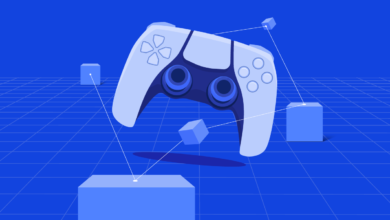Intellectual PropertyIP Licensing
Hierarchy in the E-Sport Copyright Regime: Is Vesting of Copyright in an E-Sports Player a Possibility?

Electronic Sports or E-Sports have taken the post-pandemic world by storm. With the coronavirus pandemic affecting the possibility of participating in and conducting traditional physical sports, a large part of the global audience has slowly migrated towards watching E-Sports as a source of entertainment. In a report released by Newzoo, the global games live-streaming audience in 2020 was around 662.54 million and is expected to hit 728.8 million in 2021 (a 10% increase). The expected revenues from E-Sports are expected to grow to $1,084 million in 2021, an increase of 14.5%, from the $947.1 million in 2020. The report forecasts global revenue from E-Sports to exceed $1.6 billion by 2024, reflecting a Compound Annual Growth Rate (CAGR) of 11.1%. These numbers indicate the lucrative nature of the world of E-Sports and show the potential for growth over time.
With the E-Sports industry taking massive strides, it brings along with it a complex array of legal issues. This article will first, attempt to identify the copyright protection offered towards video games, which form the basis of the operation of E-Sports. It will then decode the hierarchical structure present in the E-Sport industry, and the issues and legal challenges that this structure brings along with it.
Video Games
A “video game” is defined by the Merriam-Webster Dictionary as “an electronic game in which players control images on a video screen”. While one could consider E-Sports to be the point of convergence between video games and traditional sport, there has been opposition from the conservative sporting community, taking offense to these comparisons. Despite the lifespan of a professional E-Sport athlete ending at their mid-20s due to constant input of younger, faster, and mentally fitter younger athletes, as well as the setting in of major injuries due to the continuous rigor of practice and performance, the “perceived” lack of effort has led to E-Sports being declared as not a sport from a few quarters.
While this is a debate that is destined to continue, especially with the forced interaction between these two worlds, it is important for us to understand the key difference that sets these apart; the fact that, unlike traditional sports, E-Sports are run on commercially produced and copyrighted video games.
While video games were never actually envisioned at the time copyright laws were framed across the world, the increased popularity that they have seen has required jurisdictions around the world to adapt accordingly. In the United States, it was in the case of Stern Electronics Inc. v. Kaufman where video games were first defined.[1] They were defined as “computers programmed to create on a television screen cartoons in which some of the action is controlled by the player”. While video games were initially offered protection as literary works based on them being considered as computer programs, this case provided an additional layer of protection by extending it to the “visual and aural” aspects of the game. The Court declared that the “repetitive sequence of a substantial portion of the sights and sounds of the game qualifies for copyright protection as an audiovisual work”. The United Kingdom occupies a similar position, protecting the underlying computer program as a literary work, and the various audio-visual components separately, as graphic works, film, sound recordings, and other literary works based on their originality.[2] There is however not much clarity on the Indian position regarding the protection offered to video games due to the lack of any such situations arising in Indian Courts.
The Hierarchical Structure
The E-Sports industry has three main stakeholders: the publisher of a particular game, the organiser of a tournament, and down the chain, the player of a specific game. The E-Sports industry has a very top-heavy structure where the publisher of a specific game controls most of the rights regarding ownership of content, and the player has the least.
- The Publisher
The creation of most video games involves three main stakeholders; individual game developers, the studio which develops the game, and the publisher, who handles the marketing and other aspects regarding the distribution of a specific game. The publisher provides funding to developers along with services for marketing a game thereby making their efficient functioning extremely crucial for the commercial success of a video game and providing them with high bargaining power. Due to the power dynamics involved, publishing deals often result in the transfer of almost all rights involved to the publisher in lieu of a share of income from the net profits made. This control over the rights often leads to publishers establishing a very dominant position in the industry, dictating the usage of IP content, depending on their discretion. This becomes worse when the developer and the publisher are the same entity.
Access to video games requires the user to comply with the Terms of Service (“ToS”) that the game publishers provide. This implies that a user operates a video game within the mandate of the ToS, which are often one-sided, and provide the publisher with a good deal of control over what a user can and cannot do. This discretion need not however necessarily be seen from a negative perspective.
Publishers often understand the marketing prowess that popular video game streamers possess. For example, Tyler “Ninja” Blevins, is a professional Battle Royale Player and Streamer associated with popularizing Fortnite, a game owned by Epic Games Inc. While he played a major role in popularizing Fortnite, in return, he managed to shovel over USD 500,000 per month by streaming, uploading videos on YouTube, as well as benefits from the usage of his creator code by other users of the game. Most ToS’ allow for players to use content that they create in a limited manner. For example, Riot Games, which is the developer as well as the publisher of globally popular games such as League of Legends (“LoL”) grants the users a:
“personal, non-exclusive, non-sublicensable, non-transferable, revocable, limited license for you to use, display and create derivative works.”
This license allows commercial use for the purposes of generating Ad Revenue, Gameplay Streaming, and for the development of other commercial projects by using Riot IP as a base, as long as these uses fulfill the terms of use put forth by Riot Games. While these terms might seem generous, often allowing for streamers to consistently make earnings of over six figures on an annual basis, the discretion held by publishers can also be problematic.
The legal section on the Riot games elaborates as follows:
“We reserve the right to deny anyone the use of our IP at any time, for any reason or no reason, including when we decide, in our sole and absolute discretion.”
Apart from denying the rights over the usage of IP content over video games, these ToS’ often also involve clauses that transfer almost all rights over any User Generated Content (“UGC”), via a license, to the publishers. Other common clauses present include ones that prevent users from generating any profits from the UGC that they create and ones that allow publishers to take down any content that violates any rules or restrictions put forth.
This control that is present in the hands of the publishers often leads to the use of their discretion in very arbitrary manners. For example, in 2017, YouTube’s largest independent content creator, Felix “PewDiePie” Kjellberg used a racial slur while live-streaming a popular game. This led to Campo Santo, the publisher of an entirely different game called Firewatch, which PewDiePie had played in one of his videos, to threaten filing a Digital Millennium Copyright Act (“DMCA”) strike against him. While PewDiePie eventually took down those specific videos before the DMCA strike was issued, this incident highlights the extent of the discretionary powers that these publishers possess, and how it could be extended in an arbitrary fashion. While the usage of a racial slur is not acceptable, the fact that a publisher could threaten a takedown of content that was nowhere related to the ongoing issue highlights the arbitrary manner in which this control could be extended to other cases as well.
2. The Tournament Organiser
With regards to E-Sports, publishers follow two models for revenue generation. The first involves a league-oriented model where a roster of players, representing a franchise, plays a video game owned by a publisher. In this model, it is often the game publisher, who is also the organiser of the competitive circuit. The second model involves these players representing a team. However, the crucial difference here is that it involves the organisation and conduct of consecutive stages of a competitive circuit in the form of a tournament, the burden of which is transferred to a third-party organiser.
Tournament Organisers are third-party entities that use video games and their associated works based on the receipt of either an exclusive, or a non-exclusive license from the owners, or independently if they themselves are the owners of the copyrighted works involved. Using this license, they create a competitive setting for the hosting of E-Sports tournaments. Similar to an organiser of a traditional physical sport, such as the National Basketball Association (“NBA”), or Major League Soccer (“MLS”), their responsibilities involve leasing out arenas, identifying potential sponsors, inviting teams to participate, and other such duties. The element of copyrightable content present in E-Sports, via the involvement of video games, however, plays a critical and challenging role for E-Sport tournament organisers.
In general, most content generated from a tournament involves game footage, commentary on gameplay, footage of players, or fans in the crowd, background music, and other trademarks present in the arena.[3]However, since the game footage is the most dominant aspect of any footage derived from a tournament, this license that tournament organisers obtain from the owners plays a very crucial role. While there are no issues involved if the organiser themselves are the owners of the video game such as in the case of the LoL World Championships held by Riot Games, and The International, Dota 2 world championships run by Valve, issues about content crop up in instances where this is not the case.
Issues stem from licensing agreements signed between the publisher and the tournament organiser, which often treat the organiser in a manner similar to any other user. Issues surrounding the organisation of tournaments involving Dota 2 owned by Valve can be cited as an example. In the 2017-18 Dota 2 season, Season 3 of the StarLadder i-League Invitational involved a list of reputed E-Sport players and streamers being hit with DMCA Copyright strikes from the tournament organisers for streaming their gameplay. Before the organisers could put forth a statement regarding this, Valve immediately released a statement elaborating that tournament organisers could not do this unless the stream against which the strike was issued directly competed with the tournament organiser’s stream by adding branding overlays, advertisements, or sponsorships. Valve maintained the same stance when the Electronic Sports League (“ESL”) signed an exclusive streaming agreement with Facebook for the broadcasting rights of their 2018 tournament which included Valve’s Dota 2. This position essentially implied that while the tournament organiser had the license to use the game in a specific tournament, it was still the publisher who would decide on who would be allowed to broadcast the stream. This model proves to be detrimental since it strips off a revenue stream for the organisers. Sponsors pay to feature in the broadcaster’s official stream, and the higher number of viewers benefit both, the sponsors, as well as the broadcaster. With the owner of a game now effectively deciding the broadcasting rights and allowing for alternate methods of streaming of the same event, a fall in viewer numbers could prove to be detrimental towards the financial goals of a tournament organiser.
However, Valve, in 2019, allowed the organisers of the StarLadder Major: Berlin 2019 Tournament, which featured CS:GO, another video game owned by them, to aggressively issue DMCA takedowns against streamers broadcasting the CS:GO matches on their own stream. Tournament organisers, therefore, occupy a very precarious position where, despite all the risks assumed by them, the rights acquired by them can be usurped at any moment by the publishers.
3. The E-Sport Player
The player of an E-Sport occupies the lowest spot in the chain of stakeholders. It is the UGC that a player generates that contributes the most towards the commercial success of a game, and it is this UGC, that is created by the interaction of the player with the video game that provides elements that could be copyrighted by the player. While, as explained earlier, it is the ToS that governs any UGC, it is important to identify whether there is any possibility to hand over the rights of the UGC to the player from the perspective of copyright laws.
In the Indian context, gameplay could either be protected as a performance or could be protected with original copyright. In India, the rights of a performer are protected under Section 38 and Section 39 of the Copyrights Act, 1957. Section 2(q) defines the term performance which provides an implication that for gameplay to be considered as a performance, it has to be a visual or acoustic presentation, and should be made live by the player. Unlike the Indian context, the rights of performers are not separately present in the United States, therefore, making a comparison of jurisprudence infeasible.
From the perspective of providing original copyright to UGC, the three main tenets that decide copyrightability of content in India are originality,[4] fixated expression,[5] and creativity.[6] These aspects could technically be satisfied if a player creates gameplay that involves non-repetitive or patterned images with the presence of an original character avatar, tags, and other mods, uses a certain level of creativity to conduct the same, and then, uses any storage device to fixate the same. However, issues still do arise when one looks at whether the efforts put in by the player, which involve a variety of mouse clicks, different keyboard combinations, and a combination of button clicks on a controller are creative in nature, separable from the functional aspects of a video game. For example, in the United Kingdom, in the case of Premier League v. QC Leisure, the Court declared that there is no creativity at play since the player is constrained by the rules of the video game, making what the player displays a “skill”, and not anything creative.[7] Establishing that what a player displays are in fact creative expression becomes an issue. Finally, even if one goes past this barrier, gameplay will still involve copyrighted elements owned by publishers, thereby complicating this pursuit of providing copyright to the players.
Conclusion
There is a lack of legal jurisprudence in India regarding the protection of video games, as well as E-Sport. With the gradual surge in popularity of E-Sports, it is prudent to believe that this would bring along with it an array of legal issues. It is therefore essential for there to be a development of both, jurisprudence, as well as legislation that look at resolving the issues that have been elaborated upon above. With the player of an E-Sport occupying a crucial role in the entire process, it is essential to formulate our laws keeping this stakeholder in mind.
Citation:
Karthik Subramaniam, Hierarchy in the E-Sport Copyright Regime: Is Vesting of Copyright in an E-Sports Player a Possibility?, Metacept-Communicating the Law, accessible at http://metacept.com/hierarchy-in-the-e-sport-copyright-regime:-is-vesting-of-copyright-in-an-e-sports-player-a-possibility?
Resources:
[1] Stern Electronics, Inc., 669 F.2d at 853.
[2] Case C-355/12 Nintendo Co. Ltd and Others v PC Box Srl and 9Net Srl, ECLI:EU:C:2013:581.
[3] Amy Thomas, A question of (e)Sports: an answer from copyright, 15 JIPLP 960 (2020).
[4] Indian Performing Right Society v. Eastern India Motion Pictures, 1977 AIR 1443.
[5] R.G Anand vs M/S. Delux Films & Ors, 1978 AIR 1613.
[6] Eastern Book Company & Ors vs D.B. Modak & Anr (Civil Appeal No. 6472 of 2004).
[7] The Judgement of Football Association Premier League and Others v QC Leisure and Others (C-403/08) and Karen Murphy v Media Protection Services Ltd (C-429/08) EU:C:2011:613.






1 thought on “Hierarchy in the E-Sport Copyright Regime: Is Vesting of Copyright in an E-Sports Player a Possibility?”